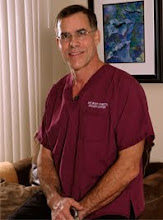 |
| Vacation photo by Dr. Yoho |
Breast surgery recovery is relatively predictable, but the most important predictor of an individual’s surgical result is their psychological and physical preparation before the surgery. Their breast shape and size often dictates how good a result can be obtained, and although we can make great improvements in many cases, certain breasts are just very difficult to make perfect. In particular, patients with long, skinny breasts or very droopy breasts require fairly extensive surgery which is significantly less predictable than just inserting an implant. Additionally, we absolutely refuse to put an implant in at the same time as a breast lift is performed. The implant pushes out on the repaired area while the little stitches and the tissue try to heal and hold the breast implant in. This is a recipe for repeat surgeries, and there are a significant number of articles in the medical journals that recommend that breast lifts not be performed at the same time that an implant is inserted.
The complications that occur with breast surgery include about a five percent rate of hardening or capsular contracture over the life of the implant. If this happens, you need to report back to us as soon as possible, because there are medical ways to treat it.
Other potential complications include: infection, but this has a very low rate at less than one percent; blood buildup around the implant which might need to be taken out within a few days, and variations in shape and position that may be related to the surgery or it may be related to the shape and size and contours of the pre-existing breast.
Touchups are just a few percent of what we do, but if we consider the result imperfect and a touchup appropriate, we do breast touchups at no charge. Come in and see us for a free consultation.
Breast wishes,
_________________________
Robert Yoho, M.D.



